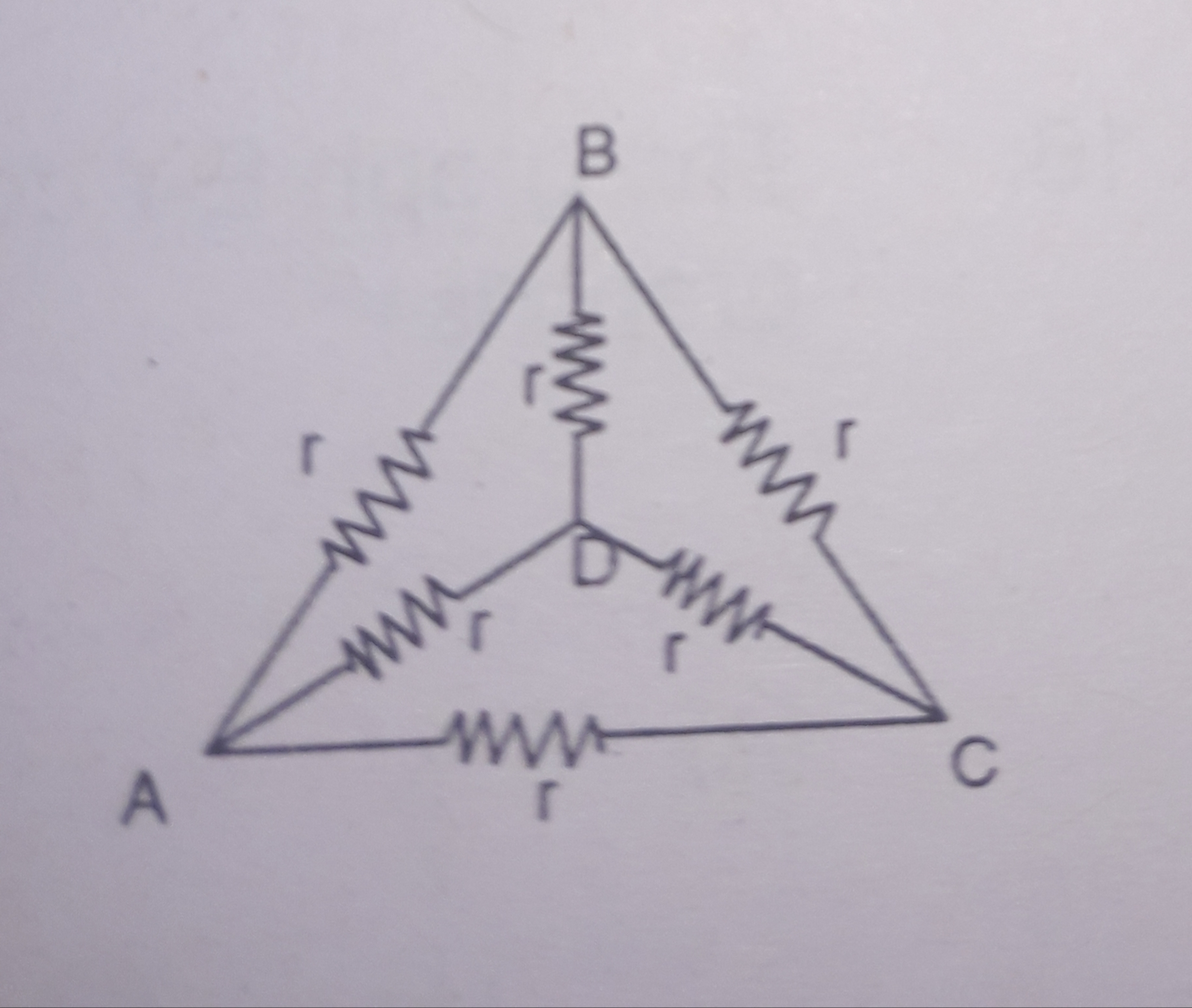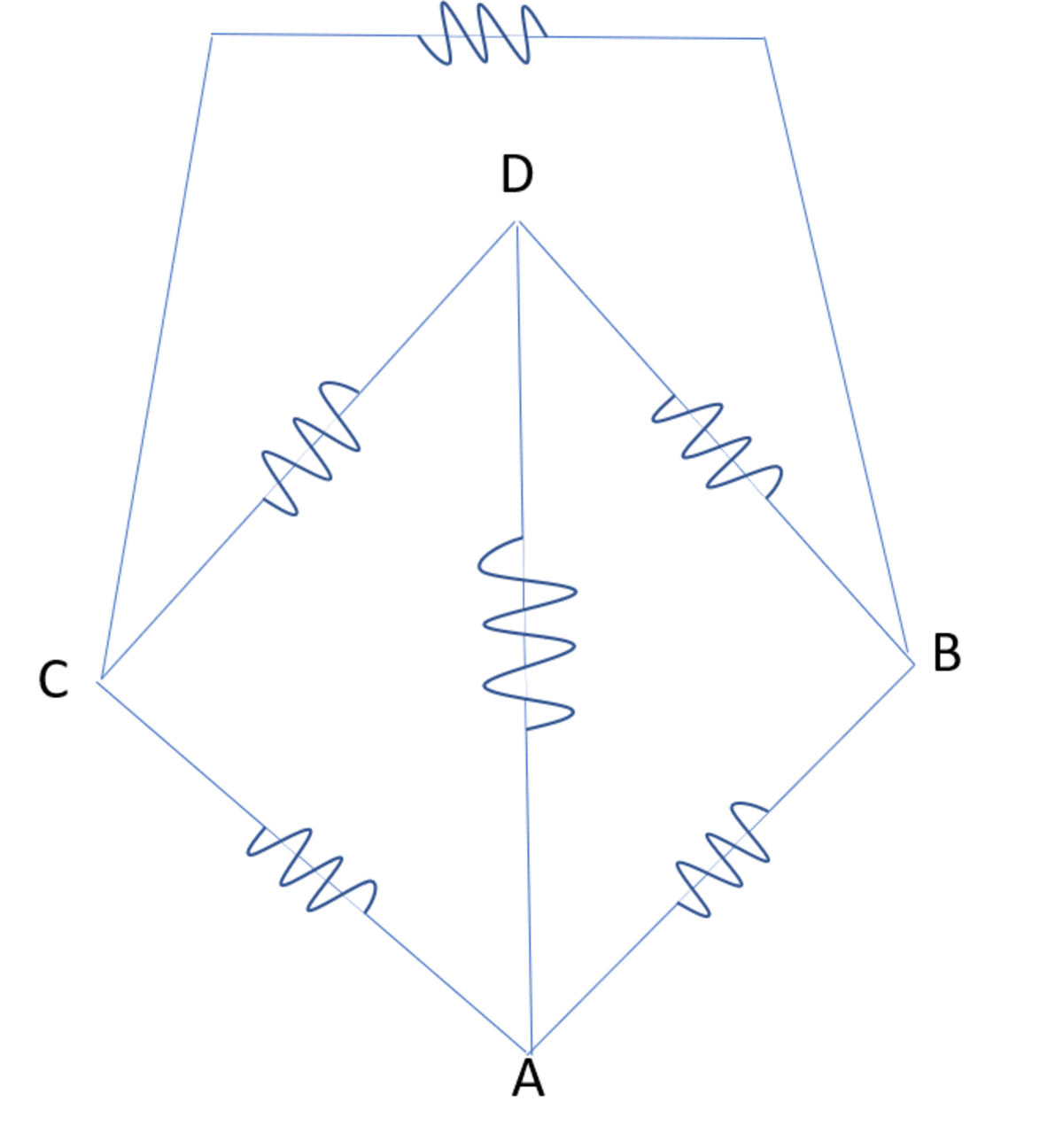Can a 7th grader solve this?
In the given network, what is the equivalent resistance between A and D ?

This section requires Javascript.
You are seeing this because something didn't load right. We suggest you, (a) try
refreshing the page, (b) enabling javascript if it is disabled on your browser and,
finally, (c)
loading the
non-javascript version of this page
. We're sorry about the hassle.
3 solutions
I am a 7 grader but I'm haven't even learned that yet! maybe there is differences in education.
Log in to reply
I'm in class 7 but I am learning class 12 syllabus.
Log in to reply
@Half pass3 .Bro why do you not post Math and Science problems?.......(just asking)
Hmmm I would place you at year 11, but I think you're doing some pretty advanced stuff.
Log in to reply
@Krishna Karthik – Thanks!,at what age did you study this topic ?
I am in 9th, but I haven't learnt this much Electricity :(
Log in to reply
No worries......btw Bro I have so much interest in learning higher physics so you can ask me anything in physics
Log in to reply
I will study Electricity in December I think. I am still doing first few chapters of Mechanics, and not even read Bio once :)
Log in to reply
@Vinayak Srivastava – Bro I suggest you to study all the subjects because it matters a lot.What are you studying in mechanics
what is the acceleration by gravity per second(no air resistance), plz.
I'm in 8th grade and I have nooooooo clue about!
Log in to reply
No worries dude!
lol, I'm 7th grade and I randomly guessed it right
Log in to reply
Lol If you know how to code tell me that which type of programmer are you
What a fluke!
Lmao! He must've prayed for the answer! And you have 20% chance of getting the answer randomly.
Log in to reply
Yes Bro horrible
Log in to reply
I don't even know about all this resistance and stuff.
mhmm true.
Easy problem, just have to twist your minds, First, calculate equivalent resistance between A AND D considering A AND B to series and then parallel connection and finally between A and C as series and again parallel and so our answer is: 2 r
Thanks use latex pls
I don't know how that's the problem...
I don't know how to convert Mathematical equations to Latex
Thanks, I will try my best
Your problems are very simple......try something tough
There is nothing simple nothing hard, only there is a maths problem...
Log in to reply
Okay bruh.....
Log in to reply
It was my opinion
Log in to reply
@Srijan Singh – no problem!!!
Log in to reply
@Dibyojyoti Bhattacharjee – Pls post one problem

The reconfiguration of the network makes this relationship more clear:
The effective resistance is given by the three parallel branches D A , D B A , D C A :
R e q 1 = r 1 + 2 r 1 + 2 r 1
Thus:
R e q = 2 r
Thanks for the solution
Why did you construct a Wheatstone Bridge?
Log in to reply
LOL I also think
Is this a flawed approach? It seems to me to be an equivalent network.
Log in to reply
No it is not flawed.Your's solution is correct
No was just saying, u thought in a complicated way, but it is correct, btw
Log in to reply
@Dibyojyoti Bhattacharjee – The initial configuration just seems a bit more complicated (to me) to deal with. Perhaps that is a personal preference, or it is that I lack a certain fluid intelligence that would enable me to get past the extra visualization step. I always first try to see if new things I encounter fit into a problem solving box I have already constructed, before making a new one!
Log in to reply
@Eric Roberts – Yeah, exactly...
Btw, what is the name of the drawing instrument you used?
Log in to reply
Yes I also want to know
Log in to reply
In which grade are you
Log in to reply
@Srijan Singh – Who are you talking about?
Log in to reply
@Dibyojyoti Bhattacharjee – You............................
Log in to reply
@Srijan Singh – Why shall I tell you that? No offenses intended in it .
Log in to reply
@Dibyojyoti Bhattacharjee – Bro I'm just asking
Log in to reply
@Srijan Singh – Still, it is not a private text, where I can tell u anything.
It was a bit sloppy of an illustration. It was Microsoft PowerPoint
Imagine putting a voltage source or voltage probe between A and D . By symmetry, the voltage across the B C resistor is always zero. That resistor is effectively an open circuit, and can be taken out. Then the equivalent resistance R is:
R 1 = 2 r 1 + 2 r 1 + r 1 R = 2 r